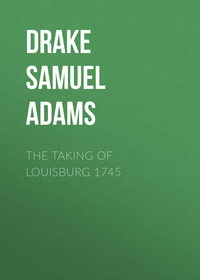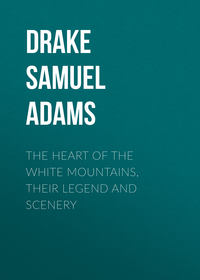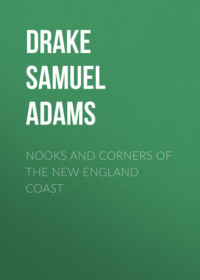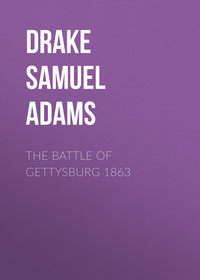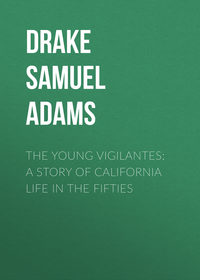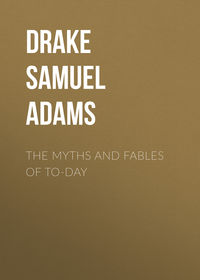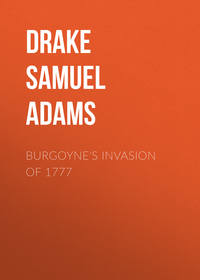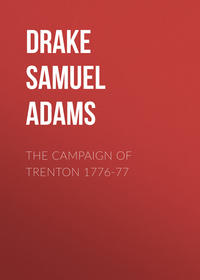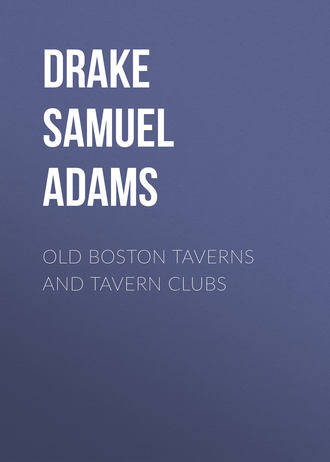 полная версия
полная версияOld Boston Taverns and Tavern Clubs
Castle, Battery March and Water streets, see Blue Bell.
Castle, northeast corner of North and Fleet streets. The early possession of Thomas Savage, John Crabtree acquires, and in 1654 conveys to Bartholomew Barnard. Barnard sells to Edward Cock in 1672-73; Cock to Margaret Thatcher, who conveys to William Colman in 1679. Colman to William Everden in 1694-95, who mortgages to Francis Holmes. Holmes conveys to John Wentworth in 1708. In 1717 John Wentworth conveys to Thomas Lee house known as the “Castle Tavern, occupied by Sarah Hunt.” In 1768 Thomas Love and wife Deborah (Lee) deed to Andrew Newell, the “Castle Tavern,” and the same year Newell to Joseph Lee. In 1785 Joseph Lee conveys to Joseph Austin the “King’s Head Tavern.” In 1798 owned and occupied by Austin. House of three and two stories, twenty-five windows, value $3000.
Castle, locality not stated. In 1721 Adrian, widow of John Cunningham, was licensed at the Castle, and in 1722 Mary English.
Cole, Samuel Cole’s inn, west side of Washington Street, corner of Williams Court, site of Thompson’s Spa. In 1633-34 Samuel Cole set up the first house of common entertainment. In 1635 he was licensed to keep an ordinary, and in 1637-38 had leave to sell his house for an inn to Robert Sedgwick. In 1646 James Penn was licensed here. Lt. William Phillips acquired the property, and in 1656-57 mortgages “The Ship Tavern.” He conveys it to Capt. Thomas Savage in 1660. The later owners were Ephraim Savage, 1677-78; Zachariah Trescott, 1712; Nicholas Bouve, 1715; John Comrin, 1742; Jonathan Mason, 1742; James Lloyd, 1763, in whose family it remained many years.
Concert Hall, south corner of Hanover and Court streets. In the Book of Possessions Jeremiah Houchin had house and garden here. His widow sold to Thomas Snawsell in 1670, and Snawsell to John Russell in 1671; Eleazar Russell to John Gardner and Priscilla Hunt in 1689-90; the heirs of Gardner to Gilbert and Lewis Deblois in 1749; Deblois to Stephen Deblois in 1754, and he to William Turner in 1769; Turner conveyed to John and Jonathan Amory in 1789. In 1798 John Amory was the owner and James Villa the occupier. A brick house, three stories, thirty windows, value $3000. Villa had been a tenant, and was licensed as an innkeeper for some years. Before it became a tavern the hall was used for various purposes – for meetings, musical concerts, and by the Grand Masons.
Cromwell’s Head or Sign of Oliver Cromwell, north side of School Street. In the Book of Possessions Richard Hutchinson was the owner of land here. Abraham Brown acquired before 1658; Sarah (Brown) Rogers inherits in 1689-90, and in 1692 Gamaliel Rogers conveyed to Duncan McFarland; Mary (McFarland) Perkins inherits, and John Perkins deeds to Joseph Maylem in 1714; John Maylem inherits in 1733, and the next owner is Elizabeth (Maylem) Bracket, wife of Anthony Bracket. In 1764 Elizabeth Bracket was licensed at her house in School Street, and Joshua Bracket was licensed in 1768. In 1796 Abigail Bracket conveyed to John Warren, who was the owner in 1798, and Henry Vose the occupier. A wooden house, three stories, thirty windows, value $6000.
Crown Coffee-House, north side of State Street, the first house on Long wharf (site of the Fidelity Trust Co. building). Jonathan Belcher was a proprietor of Long Wharf, which was extended from State Street in 1710. In 1749 his son Andrew Belcher conveyed to Richard Smith “The Crown Coffee-House,” Smith to Robert Shellcock in 1751, and the administrator of Shellcock to Benjamin Brown in 1788. In 1798 stores covered the site. In 1714 Thomas Selby was licensed as an innholder at the Crown Coffee-House, and he died here in 1727. In 1729 William Burgess was licensed, and in 1730 and 1733 Edward Lutwych; 1762 Rebecca Coffin; 1766 Richard Bradford; and in 1772 Rebecca Coffin.
Dolphin, east side of North Street, at the foot of Richmond Street. Nicholas Upshall was the owner of the land in 1644. He deeds to his son-in-law William Greenough in 1660. Henry Gibbs and wife Mercy (Greenough) inherit in 1694-95. In 1726-27 Henry Gibbs conveys to Noah Champney “The Dolphin Tavern.” John Lowell and wife Sarah (Champney) inherit, and deed to Neil McIntire in 1753, McIntire to Neil McIntire of Portsmouth in 1784, and he to William Welsh in 1785, Welsh to Prince Snow in 1798. In 1798 it was a wooden house of two stories and eleven windows, value $600. The Dolphin Tavern is mentioned by Sewall in 1718. In 1726-27 Mercy Gibbs was licensed; in 1736 Alice Norwood, and 1740 James Stevens.
Dove, Sign of the, northeast corner of Boylston and Tremont streets. In the Book of Possessions Thomas Snow was the owner, and in 1667 he mortgages his old house to which the Sign of the Dove is fastened. William Wright and wife Milcha (Snow) inherit and in 1683 convey to Samuel Shrimpton, the heirs of Shrimpton to Adam Colson in 1781, Colson to William Cunningham in 1787, Cunningham to Francis Amory in 1793, Amory to Joseph Head in 1795.
Drum, Sign of the, locality not stated. In 1761 and 1776 mentioned in the Town Records.
Exchange, northwest corner of State and Exchange streets. In 1646 Anthony Stoddard and John Leverett deed to Henry Shrimpton house and land. His son Samuel inherits in 1666, and in 1697-98 Samuel Shrimpton, Jr., inherits “the Exchange Tavern.” He mortgages to Nicholas Roberts in 1703, and the administrators of Roberts convey to Robert Stone in 1754 “the Royal Exchange Tavern.” In 1784 Daniel Parker and wife Sally (Stone) convey to Benjamin Hitchbone. In 1798 Israel Hatch was the occupier. A brick house, four stories, thirty windows, value $12,000. In 1690-91 the Exchange Tavern is mentioned by Judge Sewall. In 1714 Rowland Dike petitioned for a license. In 1764 Seth Blodgett was licensed, 1770 Mr. Stone, 1772 Daniel Jones, 1776 Benjamin Loring, 1788 John Bowers, 1798 Israel Hatch.
Exchange Coffee-House, southeast corner of State and Devonshire streets. In the Book of Possessions the land was owned by Robert Scott. The house was built in 1804 and burnt in 1818; rebuilt in 1822 and closed as a tavern in 1854.
Flower de Luce, west side of North Street, between Union and Cross streets. In 1675 Elizabeth, widow of Edmund Jackson, mortgages her house, known by the name of Flower de Luce, in tenure of Christopher Crow.
George, west side of Washington Street, near the Roxbury line. The land was a grant of the town to James Penn in 1644. In 1652 he deeds, as a gift, five acres to Margery, widow of Jacob Eliot, for the use of her children. In 1701 Eliezer Holyoke and wife Mary (Eliot) convey to Stephen Minot. In 1701-02 Minot petitions for a license to keep an inn or tavern at his house, nigh Roxbury gate. This is disapproved. In 1707 the George Tavern is mentioned. In 1708-09 Samuel Meeres petitions to sell strong drink as an innholder at the house of Stephen Minot, in the room of John Gibbs, who is about to quit his license, and in 1722-23 he was still an innholder there. In 1726 Simon Rogers was licensed. In 1733 Stephen Minot, Jr., inherits the George Tavern, now in occupation of Simon Rogers. In 1734-35 occupied by Andrew Haliburton. In 1768 Gideon Gardner was licensed. Stephen Minot, Jr., conveys to Samuel and William Brown in 1738; William Brown to Aaron Willard in 1792. In 1770 Thomas Bracket was approved as a taverner in the house on the Neck called the King’s Arms, formerly the George Tavern, lately kept by Mrs. Bowdine. Aug. 1, 1775, the George Tavern was burnt by the Regulars, writes Timothy Newell in his diary.
George, corner Dock Square and Elm Street, see Castle.
Globe, northeast corner of Commercial and Hanover streets. In the Book of Possessions the estate of William Douglass. Eliphalet Hett and wife Ann (Douglass) inherit; Nathaniel Parkman and wife Hannah (Hett) inherit. In 1702 Hannah Parkman conveys to Edward Budd; Budd to James Barnard in 1708. Barnard to John Greenough in 1711. In the division of the Greenough estate this was set off to William and Newman Greenough. Greenough to Joseph Oliver in 1779. Oliver to Henry H. Williams in 1788. In 1741 and 1787 the Globe Tavern is mentioned in the Town Records.
Goat, locality not stated; in 1737 mentioned in the inventory of Elisha Cooke.
Golden Ball, northwest corner of Merchants’ Row and Corn Court. Edward Tyng was the first owner of the land, Theodore Atkinson acquired before 1662, and conveys to Henry Deering in 1690. In 1731 part of Deering’s estate was the house known as the “Golden Ball,” now occupied by Samuel Tyley. Mary (Deering) Wilson inherits and bequeathes to her niece Mary (Deering), wife of John Gooch. In 1795 Benjamin Gerrish Gray and wife Mary (Gooch) convey to James Tisdale house known by the name of the Golden Ball Tavern. In 1798 stores covered the site. In 1711 Samuel Tyley petitions for renewal of his license upon his removal from the Salutation to Mr. Deering’s house in Merchants’ Row. In 1757 it was kept by John Marston.
Grand Turk, Sign of, Washington Street, between Winter and Boylston. In 1789 Israel Hatch (innholder).
Green Dragon, west side of Union Street, north of Hanover. In the Book of Possessions James Johnson owned three fourths of an acre on the mill pond. The next estate that separated him from Hanover Street was owned by John Davis. In 1646 Johnson deeds to Thomas Marshall, and Marshall to Thomas Hawkins. In 1645 John Davis deeds to John Trotman, whose wife Katherine on the same day conveys to Thomas Hawkins. In 1671 Hawkins mortgages to Samson Sheafe, and January, 1671-02, the property is delivered to Sheafe. In 1672-03 Sheafe deeds part to John Howlett (see Star Tavern), bounded northwest by William Stoughton. No deed is recorded to Stoughton. Stoughton died in 1701, and this estate fell to his granddaughter Mehitable, wife of Capt. Thomas Cooper. She later married Peter Sargent and Simeon Stoddard. In 1743 her son Rev. William Cooper conveys the brick dwelling called the Green Dragon Tavern to Dr. William Douglass. On the division of the estate of Douglass this fell to his sister Catherine Kerr, who in 1765 deeds to St. Andrews Lodge of Free Masons. In 1798 it is described as a brick dwelling, three stories, thirty-nine windows, with stable, value $3000. In 1714 William Patten, late of Charlestown, petitions to sell strong drink as an innholder at the Green Dragon in the room of Richard Pullen, who hath quitted his license there.
Gutteridge Coffee-House, north side of State Street, between Washington and Exchange streets. Robert Gutteridge was a tenant of Hezekiah Usher in 1688, and was licensed in 1691. In 1718 Mary Gutteridge petitions for the renewal of her late husband’s license to keep a public coffee-house.
Half Moon, southwest side of Portland Street. Henry Pease was the owner of the land in the Book of Possessions. He conveys to Thomas Matson in 1648, and Joshua Matson to Edward Cricke in 1685. In 1705 his widow Deborah Cricke conveys to Thomas Gwin house commonly called “The Half Moon.” In 1713 Gwin sells to William Clarke. The children of Sarah (Clarke) Kilby inherit and deed to John Bradford in 1760. His heirs were owners in 1798. A brick house, two stories, thirty-nine windows, value $4000.
Hancock, Corn Court. This property was acquired by John Kendric, who sells to Robert Breck in 1652-53. Later owners, Thomas Watkins 1653, James Green 1659, Samuel Green 1712, Thomas Bromfield 1760, Joseph Jackson 1763. Jackson deeds to Morris Keefe in 1779, whose daughter Mary, wife of John Duggan, inherits in 1795. In 1798 it was a wooden house, two stories, twelve windows, value $1200.
Hatch, east side Tremont Street, between West and Boylston streets. The land was a grant of the town to Richard Bellingham in 1665. Martin Sanders acquires and deeds to Æneas Salter, and Salter to Sampson Sheaf in 1677. Jacob Sheaf to Abiah Holbrook in 1753. Adm. of Rebecca Holbrook to Israel Hatch in 1794. 1796 Israel Hatch (innkeeper).
Hawk, Summer Street. In 1740 mentioned in the Town Records.
Horse Shoe, east side of Tremont Street, between School and Bromfield streets. In the Book of Possessions this was part of the land of Zaccheus Bosworth. His daughter Elizabeth and her husband John Morse convey to John Evered, alias Webb, in 1660; Webb to William Pollard in 1663. John Pollard deeds to Jonathan Pollard in 1722 the “Horse Shoe Tavern.” In 1782 the heirs of Pollard convey to George Hamblin, who occupied it in 1798. A wooden house, two stories, eleven windows, value $1500. In 1738 Alex Cochran was licensed here.
Indian Queen, later Bromfield House, south side of Bromfield Street. The possession of William Aspinwall, who deeds the land to John Angier in 1652, and in the same year it passes to Sampson Shore and Theodore Atkinson; Atkinson to Edward Rawson in 1653-54; Rawson to Robert Noaxe, 1672; Noaxe to Joseph Whitney, 1675; Whitney to Edward Bromfield, 1684; Edward Bromfield, Jr., to Benjamin Kent, 1748; Ex. of Kent to Henry Newman, 1760; Newman to John Ballard, 1782. In 1798 it was occupied by Abel Wheelock, Trask, and Brown. A brick and wooden house, two stories, thirty-four windows, value $4500, with a stable.
Julien Restorator, northwest corner of Milk and Congress streets. In the Book of Possessions John Spoor had a house and one acre here, which he mortgaged to Nicholas Willis in 1648. In 1648-49 Henry Bridgham sold a house on Washington Street to John Spoore, so it may be possible that they exchanged lots. In 1655 Bridgham was the owner. He died in 1681, and his widow in 1672. In 1680 his estate was divided among his three sons. John, the eldest, settled in Ipswich, inherited the new house, and that included the west portion. In 1719 he deeds his share to his nephew Joseph Bridgham, who in 1734-35 conveys to Francis Borland, then measuring 106 ft. on Milk Street. Borland also bought a strip of James Dalton in 1763, which addition reached the whole length of the lot, which has been abridged by the laying out of Dalton’s Lane (Congress Street). Francis Borland died in 1763, and left the Milk Street estate to his son Francis Lindall Borland, who was absent and feared to be dead. Jane Borland married John Still Winthrop, and in 1765 the estate was divided among the Winthrop children. These heirs conveyed the Congress Street corner to Thomas Clement in 1787, and in 1794 he sold it to Jean Baptiste Gilbert Payplat dis Julien (restorator). Julien died in 1806, and his heirs conveyed it in 1823 to the Commercial Co. The house was taken down in 1824. In 1798 it was a wooden dwelling, three stories, eighteen windows, value $6000.
King’s Arms, west side of Washington Street, between Brattle and Court streets. Nearly all of the original lot was taken for the extension of Washington Street, and the exact location obliterated. It was one of the estates at the head of the Dock. In the Book of Possessions, owned by Hugh Gunnison, who in 1646 was licensed to keep a house of entertainment. Oct. 28, 1650, he mortgages the estate called the King’s Arms, and in 1651 conveys it to John Samson, Henry Shrimpton, and William Brenton (see Suff. Deeds, Lib. 1, fol. 135, where there is an interesting and complete inventory). Henry Shrimpton gets possession of the whole, and in his will, 1666, bequeathes to his daughter Sarah Shrimpton “the house formerly called the States Arms.” In 1668-69 Eliakim Hutchinson, on his marriage with Sarah Shrimpton, puts the estate in trust for his wife, “heretofore called the King’s Arms.” He also enlarged the estate by buying adjoining land of the William Tyng and Thomas Brattle estates. By the will of Eliakim Hutchinson in 1718, and that of his wife in 1720, the whole estate went to their son William Hutchinson, who in 1721 devised to his son Eliakim Hutchinson. Eliakim still further enlarged the estate. He was a Loyalist, and his estate was confiscated. In 1782 the government conveyed part of it to Thomas Green and the remainder to John Lucas and Edward Tuckerman.
King’s Arms, west side of North Street, between Sun Court and Fleet Street. The lot of Thomas Clarke in the Book of Possessions, which he sold to Launcelot Baker in 1648, and Baker to George Halsey in 1648, the trustees of Halsey to Evan Thomas in 1656, “The King’s Arms.” In 1680 his widow Alice Thomas mortgages the house formerly known as King’s Arms, and she sells it in 1698 to Joseph Bill.
King’s Arms, on the Neck, see George.
King’s Head, northeast corner of North and Fleet streets, see Castle.
Lamb and White Lamb, west side of Washington Street, between West and Boylston streets, on the site of the Adams House, the original lot of Richard Brocket, which he deeds to Jacob Leger in 1638; and Ann Leger, widow, to John Blake in 1664; Blake to Edward Durant in 1694; Durant to Jonathan Waldo the southern part in 1713-14; Jonathan Waldo, Jr., to Samuel Cookson in 1780; Cookson to Joel Crosby in 1795. In 1798 Joel Crosby was the owner and occupier of the Lamb Tavern. A wooden building of two stories, twenty-four windows, value $4200. In 1738 it was mentioned in the Town Records, and in 1782 Augustus Moor was licensed there.
Lighthouse, 1766, mentioned in the Town Records. It was not far from the Old North Meeting House.
Lion, Sign of, Washington Street, between Winter and Boylston streets. 1796 Henry Vose (innholder).
Logwood Tree, Sign of, south side of Commercial Street, between Hanover and North streets. The lot of John Seabury in the Book of Possessions, which he deeds to Alex Adams in 1645, Adams to Nathaniel Fryer in 1653-54, and Fryer to John Scarlet in 1671. Scarlet to Joseph Parminter in 1671-72. In 1734-35 Hannah Emmes, sister of Parminter, conveys to John Read the house known as the “Sign of the Logwood Tree”; Read to Thomas Bently in 1744, and Bently to Joshua Bently 1756. In 1798 it was occupied by Captain Caswell. A wooden house, two stories, fourteen windows, value $1000. In 1732 mentioned in the Town Records. See also Queen’s Head.
Marlborough Arms and Marlborough Head, south side of State Street, east of Kilby Street. In 1640 William Hudson was allowed to keep an ordinary. His son conveys this in 1648 to Francis Smith, and Smith to John Holland. Judith Holland conveys to Thomas Peck in 1656; Thomas Peck, Jr., to James Gibson, 1711. In 1722 Mary Gibson deeds to her children “house named Marlborough next the Grapes.” James Gibson to Roger Passmore, 1741; Passmore to Simon Eliot, 1759; Eliot to Leonard, 1760; Jarvis to Benjamin Parker, 1766; John Erving acquires and deeds to William Stackpole, 1784. In 1798 it had been converted into a brick store. Elisha Odling was licensed in 1720, Sarah Wormal in 1721, and Elizabeth Smith 1722.
Mitre, east side of North Street, at the head of Hancock Wharf (Lewis Wharf), between Sun Court and Fleet Street. The lot of Samuel Cole in the Book of Possessions, which he conveys to George Halsey in 1645; Halsey to Nathaniel Patten, 1654; Patten to Robert Cox, 1681; Cox to John Kind, 1683-84; Jane Kind to Thomas Clarke (pewterer), 1705-06; Clarke to John Jeffries, 1730. His nephew David Jeffries inherits in 1778, from whom it went to Joseph Eckley and wife Sarah (Jeffries). In 1782 heirs of John Jeffries owned house “formerly the Mitre Tavern.” In 1798 the house had been taken down.
Noah’s Ark, southwest corner North and Clarke streets. The early possession of Capt. Thomas Hawkins. He was lost at sea, and his widow married (2) John Fenn and (3) Henry Shrimpton. In 1657 William Phillips conveys to Mary Fenn the house called Noah’s Ark, the property of her first husband Thomas Hawkins, and which her son-in-law John Aylett had mortgaged to William Hudson, by whom it was sold to William Phillips. In 1657 Mary Fenn conveys to George Mountjoy, and in 1663 Mountjoy to John Vial. In 1695 Vial deeds to Thomas Hutchinson. In 1713 the house was known as Ship Tavern, heretofore Noah’s Ark, in part above and in part below the street called Ship Street.
North Coffee-House, North Street. Dec. 12, 1702, Edward Morrell was licensed.
North End Coffee-House, northwest side of North Street, between Sun Court and Fleet Street. The land of Capt. Thomas Clarke in the Book of Possessions. Elisha Hutchinson and wife Elizabeth (Clarke) inherit. Edward Hutchinson conveys to Thomas Savage in 1758. John Savage inherits, and deeds to Joseph Tahon in 1781, Tahon to Robert Wier in 1786, Wier to John May in 1795 the “North End Coffee-House.” In 1782 Capt. David Porter was licensed to keep a tavern at the North End Coffee-House. In 1798 John May was owner and occupier. A brick house, three stories, forty-five windows, value $4500.
Orange Tree, northeast corner of Hanover and Court streets. Land first granted to Edmund Jackson, Thomas Leader acquires before 1651, and his heirs deed to Bozoon Allen in 1678. Allen conveys in 1700 to Francis Cook “the Orange Tree Inn.” Benjamin Morse and wife Frances (Cook) inherit. John Tyng and wife Mary (Morse), daughter of Benjamin, inherit. John Marshall and other heirs of Tyng owners in 1785 and 1798, when it was unoccupied. A wooden house, three stories, fifty-three windows, value $4000. In 1712 Jonathan Wardell, who had married Frances (Cook), widow of Benjamin Morse, was licensed, and from 1724 to 1746 Mrs. Wardell was licensed.
Peacock, west side of North Street, between Board Alley and Cross Street, on the original estate of Sampson Shore, who conveyed to Edwin Goodwin in 1648, and he to Nathaniel Adams. In 1707-08 Joseph and other children of Nathaniel Adams deed to Thomas Harris house and land near the Turkey or Peacock. In 1705 Elihu Warden owns a shop over against the Peacock Tavern. Sept. 26, 1709, Thomas Lee petitions to keep a victualling house at a hired house which formerly was the Sign of the Turkie Cock.
Peggy Moore’s Boarding House, southwest corner of Washington and Boylston streets. On the original estate of Jacob Eliot. His daughter Hannah Frary inherits, Abigail (Frary) Arnold inherits, and then Hannah (Arnold), wife of Samuel Welles. In 1798 Samuel Welles owner, and he with Mrs. Brown and Peggy Moore occupiers. A wooden house, two stories, and seventy-one windows, value $10,000.
Pine Tree, Dock Square. In 1785 Capt. Benjamin Gorham was licensed on Dock Square, at the house known by the name of the Pine Tree Tavern. Gorham bought a house in 1782 of John Steel Tyler and wife Mary (Whitman), situated on northwest side of North Street, between Cross Street and Scott Alley, which he sold in 1786 to John Hinckley.
Punch Bowl, Sign of the, Dock Square. 1789 Mrs. Baker (innholder).
Queen’s Head, Fleet Street. April 19, 1728, Anthony Young petitions to remove his license from the Salutation in Ship Street to the Sign of the Swan in Fleet Street, and set up the Sign of the Queen’s Head there. Nov. 28, 1732, Joseph Pearse petitions to remove his license from the house where he lives, the Sign of the Logwood Tree in Lynn Street, to the house near Scarlett’s Wharf at the Sign of the Queen’s Head, where Anthony Young last dwelt.
Red Cross, southwest corner of North and Cross streets. In 1746 John Osborn (innholder) bought land of Tolman Farr, to whom it had descended from Barnabas Fawer, who bought it of Valentine Hill in 1646. The children of Osborn sold it in 1756 to Ichabod Jones, whose son John Coffin Jones inherited.
Red Lyon, northeast corner of North and Richmond streets. Nicholas Upshall was the owner in 1644. Nov. 9, 1654, Francis Brown’s house was near the Red Lyon. Joseph Cock and wife Susannah (Upshall) inherit half in 1666, Edward Proctor and wife Elizabeth (Cock) inherit in 1693-94 half of the Red Lyon Inn, John Proctor deeds to Edward Proctor in 1770, Proctor to Charles Ryan in 1790, Ryan to Thomas Kast in 1791, Kast to Reuben Carver in 1794. In 1798 William T. Clapp was occupier. A brick and wooden dwelling, three and two stories, twenty-four windows, value $2500. In 1763 mentioned in the Town Records.




